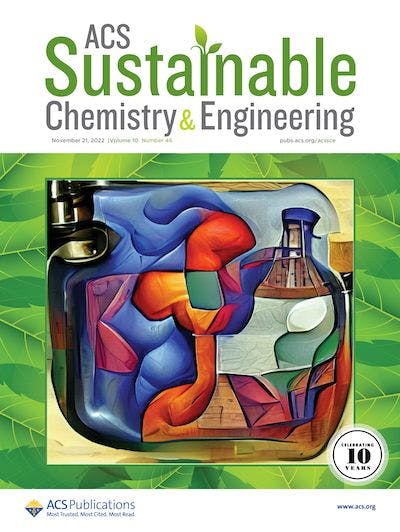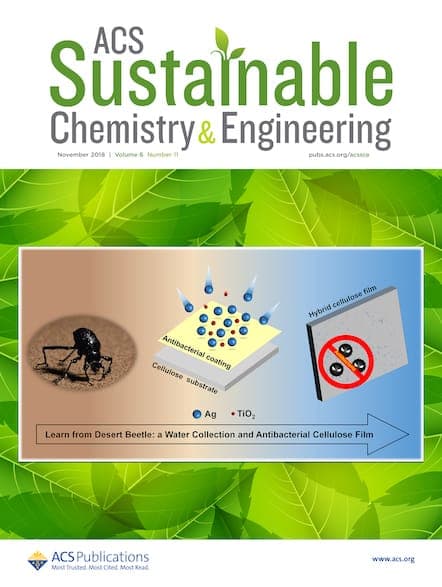The popularity of online shopping means the packaging on many products is doubled, and delivery boxes and protective materials are often thrown directly into the trash. But could we make better use of these resources, replacing traditional foam cushioning with something more sustainable?

For many of us in this post-pandemic world, online shopping has become our primary (or even our only) form of retail. But each delivery comes at a cost, both in terms of the transportation footprint and the additional packaging required to protect our goods en route. Cushioned packaging, commonly made from plastic polymer foams, is often used to absorb external shocks and vibrations. However, these materials pose significant environmental challenges—they rely on petroleum resources for production and are not biodegradable, creating an end-of-life waste management issue.
As a result, developing more environmentally friendly and biodegradable foam cushioning materials has become a pressing need. To address this, researchers in China worked to produce a new biodegradable foam with low density, high porosity, and outstanding thermal insulation.1 By combining wastepaper fibers with polyvinyl alcohol and gelatin, the authors achieved a unique "bridge-linking" and "membrane-linking" structure within the foam. This not only enhances the foam's mechanical properties, but it also creates a delicate balance between thermal insulation and energy absorption—previously deemed incompatible in cushioning materials. Furthermore, by impregnating shear thickening fluids into the foam, the researchers were able to create an ultrahigh energy-absorbing biodegradable material that could be used to deliver packages in extreme environments such as parachute-free airdrops.

Biodegradable Wastepaper-Based Foam with Ultrahigh Energy-Absorbing, Excellent Thermal Insulation, and Outstanding Cushioning Properties
ACS Sustainable Chemistry & Engineering
DOI: 10.1021/acssuschemeng.3c06230
Their findings, published in ACS Sustainable Chemistry & Engineering, highlight the potential of this biodegradable foam across various applications. Its eco-friendly composition and superior performance position it as a viable alternative to conventional foamed plastics in packaging. Moreover, its ability to adapt to extreme environments opens doors for applications in disaster relief efforts and other specialized sectors.
By repurposing abundant wastepaper without the need for complex chemical treatments, the authors note that their new method addresses not only environmental concerns but also resource efficiency. The foam's biodegradability further ensures that it leaves minimal ecological footprint—a crucial consideration in today's eco-conscious landscape.
Other teams have also worked on transforming wastepaper into useful, eco-friendly materials—such as aerogels for applications in crude oil spills and other organic pollution, where the strength of cellulose has its advantages.2 Again, by relying on simple ingredients such as paper and polyvinyl alcohol solution, one team of researchers were able to produce a wood sponge, which could have great potential in reusable oil–water separation due to low cost, high performance, and biodegradability.3 Another group successfully created an aerogel from waste cardboard by mixing Ca2+ cross-links and applying a stearic acid treatment. This aerogel successfully absorbed oil droplets in oil and water emulsions, achieving an efficiency of over 98.5%, and it proved resilient across multiple uses without losing its adsorption capacity.4
The reasonable disposal of wastepaper and cardboard is of great significance to global sustainable development and green economics, and the research being done in this field offers hope for a new era of packaging materials and product transportation—one defined by sustainability, innovation, and performance.

Stay Connected

Submit Your Research
References
- Zhang, B. et al. Biodegradable Wastepaper-Based Foam with Ultrahigh Energy-Absorbing, Excellent Thermal Insulation, and Outstanding Cushioning Properties. ACS Sustainable Chem. Eng. 2023, 11, 49, 17543–17551.
- Nyguyen, S. T. et al. Cellulose Aerogel from Paper Waste for Crude Oil Spill Cleaning. Ind. Eng. Chem. Res. 2013, 52, 51, 18386–18391.
- Cai, Y. et al. Wood Sponge Reinforced with Polyvinyl Alcohol for Sustainable Oil–Water Separation. ACS Omega 2021, 6, 19, 12866–12876.
- Shi, G. et al. Superhydrophobic Waste Cardboard Aerogels as Effective and Reusable Oil Absorbents. Langmuir 2021, 37, 25, 7843–7850.
